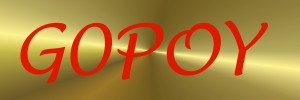Artwork
Producing the Artwork.
The Artwork for the board is produced by whatever design tool you decide to use. It then has to be printed onto some form of film that can be used as a "negative" (it is actually a positive). The process is the same as when making a photographic contact print. I made up a simple test board layout consisting of groups of 4 tracks, each track was the same width, and the spacing between the tracks was the same as the track width. In 1/1000 inch the tracks are 8, 10, 12, 14, 16, 18, 20, 25 & 50. The 8th. lines were VERY ambitious..
One site suggested that tracing paper could be used. I tried that and the results were a bit disappointing. For the next test I tried overhead projector film. (Staples own brand transparency film, Number TRS00900) This was fairly successful, and could be used with a little care. However I was not totally satisfied with the results. While the film did work it does have a few problems. The main one is that there are often small pinholes in the black, where the toner does not stick to the film very well. As the special films for PCB work, such as the Jetstar from Mega is rather expensive I searched for some better OHP type film. During the search I found this:
Hydrocopy PPC-Laser Film F100TDL.
Note the product number has changed and is now F120HLF A4 Light Frost. It is slightly thicker than F100TDL This artwork film works out at well under half the price of the Jetstar, the cost is about 22p per sheet. As A4 is usually far too large for the PCB's that I make, I cut the paper down to A5 which halves the price down to 11p per sheet.
The difference between the OHP film and the F100TDL is quite marked. The image below was scanned in at 1200dpi. The tracks are 8 th. If you look carefully, you can see the holes in the black lines (ignoring the dust) especially in the thick line above the figure 8 and in the 8 itself. You can alse see that the clear areas in the OHP version are slightly grey compared to the same areas in the F100TDL film.
